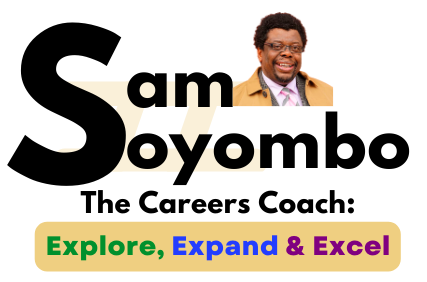1. Why is conducting a skills assessment important for shaping my career choices?
see all the answers below
2. How do mindfulness and meditation contribute to creativity?
3. Is creativity limited to artistic fields?
4. How does failure play a role in the creative process?
5. Can the strategies be easily incorporated into a busy schedule?
Creativity is an innate human ability that has the power to shape our lives and the world around us. It fuels innovation, sparks new ideas, and brings beauty and meaning to our existence. However, in today’s fast-paced and often demanding world, nurturing and fostering our creative potential can sometimes take a backseat.
Creativity is not limited to artists or those in traditionally creative fields. It is a skill and mindset anyone can cultivate and nurture, regardless of background or profession. Whether you’re an entrepreneur, a scientist, a writer, or a student, embracing and harnessing your creative potential can unlock a world of possibilities and transform how you approach challenges and opportunities.
This blog will explore eight powerful strategies for nurturing creativity daily. These strategies are practical and accessible, designed to help you tap into your creative wellspring and unleash your imagination. By incorporating these strategies into your routine, you can foster a creative mindset, overcome creative blocks, and experience the numerous benefits of creativity in your personal and professional life.
Creativity is not just about generating ideas; it’s a way of thinking and being. It encourages us to explore, take risks, and embrace the unknown. By nurturing our creativity, we can approach problems with fresh perspectives, find innovative solutions, and experience a sense of fulfilment and purpose in everything we do.
Who can benefit from the strategies of career development?
Anyone aiming for fulfilment can benefit from the strategies for career development. Embracing failure, sticking to a creative routine, and celebrating achievements foster a more satisfying and purposeful life.

Strategy 1: Engage in Mindfulness and Meditation
In today’s fast-paced world, our minds are often cluttered with distractions. Mindfulness and meditation allow us to quiet the noise and cultivate focused awareness. By taking time each day to be present at the moment, we create space for new ideas and connections to emerge. Mindfulness enhances our ability to observe our thoughts without judgment, giving rise to fresh perspectives and creative insights.
Practical tip: Set aside dedicated time for mindfulness or meditation. Find a quiet space, sit comfortably, and focus on your breath. As thoughts arise, gently acknowledge them and bring your attention back to the present moment.
How do mindfulness and meditation contribute to creativity?
Mindfulness and meditation cultivate focused awareness, creating space for new ideas and connections to emerge and fostering fresh perspectives and creative insights.
Strategy 2: Encourage Playfulness
As children, we naturally engage in play and embrace our imagination. However, as we grow older, the pressure to conform and meet societal expectations can dampen our playful spirit. It’s essential to reconnect with our inner child and embrace playfulness to nurture creativity. Activities encouraging exploration, curiosity, and spontaneity can stimulate creative thinking.
Practical tip:
- Set aside regular time for playful activities.
- Engage in improvisational exercises, play board games, or indulge in creative hobbies that allow you to experiment and have fun without the pressure of a specific outcome.
- Embrace the joy of the process rather than focusing solely on the result.
Strategy 3: Collaborate and Brainstorm
Creativity thrives in collaborative environments where ideas can be freely shared and built upon. Surround yourself with individuals who inspire and challenge your thinking. Engaging in collaborative projects or brainstorming sessions allows for the exchange of diverse perspectives and stimulates innovative thinking. Through collaboration, we tap into a collective creative energy that propels everyone forward.
Practical Tip: Initiate collaborative projects with like-minded individuals or join creative communities where you can share ideas and receive constructive feedback. Encourage open and non-judgmental discussions that foster a supportive environment for creative exploration.
Is creativity limited to artistic fields?
No, creativity is a way of thinking applicable to entrepreneurs, scientists, writers, and individuals from diverse professions.
Strategy 4: Practice Mind Mapping
Mind mapping is a visual technique that helps organise thoughts and generate new ideas. It involves starting with a central concept or problem and branching out with related pictures, associations, and connections. Mind maps visually represent our thought process, enabling us to explore new relationships and uncover hidden possibilities.
Practical tip: Use a large sheet of paper or a digital mind-mapping tool to create mind maps. Start with a central idea or theme and draw branches to connect related ideas, associations, and keywords. Allow your thoughts to flow freely and make connections between seemingly unrelated concepts. Mind mapping can be valuable for brainstorming, planning projects, and organising complex ideas.
Strategy 5: Seek Diverse Experiences
Exposing ourselves to various experiences, cultures, and perspectives fuels our creativity. We gain fresh insights and inspiration when we leave our comfort zones and engage with different environments. Travelling to new places, exploring other art forms, reading books from various genres, and conversing with people from diverse backgrounds provide us with a rich tapestry of inspiration.
Practical Tip: Make a conscious effort to seek out new experiences daily. Travel to unfamiliar destinations, visit museums and galleries, try different cuisines, and engage in activities outside your usual routine. Embrace diversity in all its forms, and allow the richness of these experiences to infuse your creative work.
How does failure play a role in the creative process?
No, creativity is a way of thinking applicable to entrepreneurs, scientists, writers, and individuals from diverse professions.
Strategy 6: Embrace Failure and Learn from Mistakes
Fear of failure can hinder our creative exploration. However, embracing failure as a natural part of the creative process is essential for growth. Creativity involves taking risks and pushing boundaries; only some ideas will succeed. Instead of viewing failure as a setback, see it as an opportunity to learn, adapt, and improve.
Practical Tip:
- Adopt a growth mindset and reframe failure as a stepping stone to success.
- When faced with setbacks, reflect on what went wrong, extract lessons from the experience, and apply those insights to refine your creative process.
- Embrace resilience and understand that failure is often necessary for innovative breakthroughs.
Can the strategies of career development be easily incorporated into a busy schedule?
Yes, the practical tips are accessible and adaptable to various time constraints, emphasising the importance of identifying and dedicating specific times for creativity.
Strategy 7: Maintain a Creative Routine
Consistency is critical when it comes to nurturing creativity. Establish regular creative practice by dedicating specific time slots for brainstorming, writing, drawing, or engaging in any creative endeavour. By prioritising creativity, you train your brain to be more receptive to creative thinking and regularly explore new ideas.
Practical Tip:
- Identify the time of day when you feel most energised and focused, and allocate it as your creative time.
- Create a designated space for your creative activities, free from distractions.
- Whether it’s early morning, late at night, or during lunch breaks, honour your creative routine and commit to it as a non-negotiable part of your schedule.
Strategy 8: Celebrate and Share Your Creations
Sharing your creative work with others is a powerful way to celebrate your achievements and invite valuable feedback. Whether through social media, art exhibitions, or presentations, sharing your creations boosts your confidence and opens doors to new opportunities and connections. Celebrating your creativity reinforces your commitment to the creative process and encourages further growth and exploration.
Practical Tip:
- Find platforms or communities to showcase your work and connect with like-minded individuals.
- Share your creations online, organise small exhibitions, or participate in local events.
- Embrace feedback and use it as a tool for improvement while staying true to your unique creative vision.
REFLECTION FOR THE DAY
How can I foster creativity in my career and utilise it as a tool for innovation?
Conclusion:
Nurturing creativity is an ongoing journey that requires conscious effort and a willingness to embrace new experiences and perspectives. By incorporating these eight strategies into your daily life, you can unlock your creative potential and reap the rewards of a more imaginative and fulfilling existence. Embrace the joy of self-expression, step outside your comfort zone, and let your creativity flourish.
Remember, the world needs your unique contributions, so dare to be creative and make a difference! With these strategies, you can cultivate a creative mindset and tap into the limitless well of your imagination, unlocking your true potential in all aspects of life. So, embrace the joys and challenges of nurturing your creativity, and watch as it transforms your life and the world around you.








Hello there, I found your web site by the use of Google at
the same time as looking for a similar subject, your site got here up,
it appears great. I have bookmarked it in my google bookmarks.
Hi there, simply turned into aware of your blog via Google, and found that it is truly informative.
I’m going to be careful for brussels. I will be grateful in the event you continue
this in future. Numerous people will likely be benefited out of your writing.
Cheers!
Creativity really makes one to be reckoned with when constructive criticism is allowed. It helps nthe the individual to be fully engaged on how to be productive via creating spaces to input more aligning creativity that will propel great innovation.
Thanks for this profound strategies for nurturing creativity in career development.
Creativity really makes one to be reckoned with when constructive criticism is allowed. It helps nthe the individual to be fully engaged on how to be productive via creating spaces to input more aligning creativity that will propel great innovation.